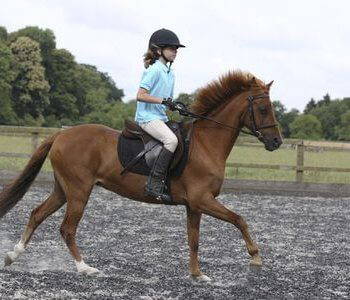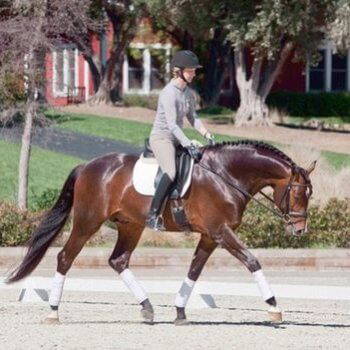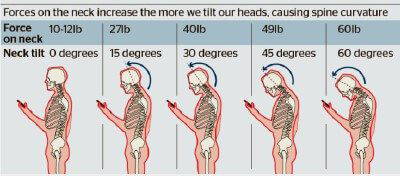Author: Helen James
We are not all made with the perfect frame to look classical on a horse. What I would give to be six-foot-tall with a slim build, so I could wear these beautiful close-fitting show jackets, looking like I have never touched a piece of chocolate in my life! In reality, I am five-foot-tall and should probably have played Rugby! However, regardless of how we are made, we can still be effective on our horse, and that comes from being self-aware of our position.
Staying in balance in the centre of the horse is so important for your safety, and for the horse’s comfort so he can move with freedom and ease. With continued guidance from someone on the ground, videos, or the use of mirrors, we can work to achieve this effective position, but it does take practice, an open mind, and self-awareness to do it.
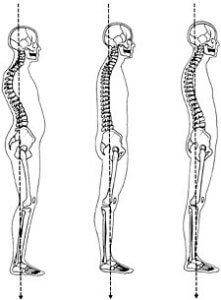 Most good riding positions will start with the correct posture when we are standing on the floor.
Most good riding positions will start with the correct posture when we are standing on the floor.
- Can you stand with even weight on both feet?
- Is your pelvis in a neutral position?
- Is your back straight?
- Are your shoulders level?
- Is the heaviest and most important part of your body, your head, central and straight?
The list could go on, and a nod to a very good chiropractor, Pilates teacher and fitness instructor is worth note here!
If you are not able to be self-aware of yourself on the floor, it is going to take a little longer in the saddle to achieve this effective, balanced position.
There is one simple visual picture we can call easily take in consideration when hoping to achieve this effective position, but it does take some imagination…
If you sit on your horse and sprinkle some fairy dust on the horse and it magically disappears from underneath you (yes, I do know that can happen without any fairy dust at times!), you should land on your feet.
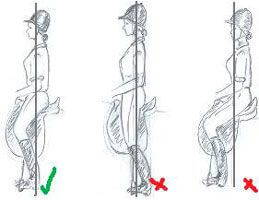 Look at this image, The first, shows that the rider would land on her feet.
Look at this image, The first, shows that the rider would land on her feet.
The second, shows that she would land on her front.
The third rider would land on her bottom if the horse was not there.
This should appear to be the same if for Dressage, Jumping or Galloping. The length of your stirrups may affect the way you sit in the saddle, so you can experiment with what length is comfortable for you to remain in balance. If you take part in a range of disciplines it is also worth looking into how your saddle influences this balance. It would be very hard to remain in balance to jump, whilst riding in a dressage saddle!
When we can hold this position with no fairy dust, we also need to become independent with our arms and hands to give the horse a kind, gentle and giving contact to the bit. To be able to rise or sit without our hands and arms moving takes lots of work, and its probably something we are all reminded about during lessons.
In picture one, the hand is drawing back, blocking the forward momentum, increasing tension on the horse’s head and mouth, and probably resulting in the first picture we saw of the rider magically going to land with her bottom on the floor.
In picture two we can see a forward giving hand, allowing the horse to reach forward with a soft neck, and with horses wanting to push his nostrils forwards into a correct outline.
This does feel hard to do, especially if you feel you have little control over your speed. But, experience indicates, the more you pull backwards, the harder it is to control what’s in front of you. Especially when the horse’s neck and nose is curled up underneath you!
Don’t forget your head!
Your head is the heaviest individual part of the body, placing about 10-12 pounds on your spine. When the head tilts forwards to about 60 degrees (I’m guessing where it is now if you are reading looking down!) it creates a lot of force on the neck and spine.
Your ears should be in line with your shoulders so you don’t tilt. When we start tilting, our spine starts to curve, putting uneven pressure on the horse, which can aggravate the horse and send confused signals and discomfort to him. We should all be aware that not everyone is able to sit on a horse and is able to make these corrections, but we can try to all be soft and effective. If you are in any discomfort at all when trying to achieve these corrections in your position, it might be wise to seek medical advice.
We all strive for the horse to be fit, and hold itself in the perfect outline for a schooling session, but its amazing to see how many riders struggle to hold their effective position for a whole schooling session too. Other fitness activities are beneficial to the rider, such as core strengthening, swimming, running, cycling etc…it really, does help. I might take my sport to a slightly excessive level, but the difference I can feel on the horse with my heart rate and core strength is amazing.
Winter is usually a time to train our horses for the exciting times ahead in spring. Perhaps we could all use this time to reflect on our position too……anyone want to come running with me!!
Happy fairy dust!!
Helen James BHSAI, UKCC2
British Dressage South West North Gloucestershire Youth and Senior Coordinator
Ultra Marathon runner!
Search
Recent Articles
- The Good, The Bad and The Ugly of Coaching
- Does your horse need more energy, especially when competing?
- Grade 1 International Para Dressage Rider Di Green- Why Lexi Needed a Year Off
- Louise Blanch – Driving Towards New Horizons with the Continued Support of the Para Equestrian Foundation.
- Kissing Spine – Prevention or Cure?
Categories
- Advice Hub
- Athlete
- Carriage Driving
- Dentistry
- Dressage
- Endurance
- Eventing
- Farrier
- Featured
- Featured Horse Ads
- Featured Posts
- Horse Racing
- Horse's Mouth
- Horseball
- Hunting
- Le Trec
- Leisure Riders
- Mounted Games
- Nutrition
- Polo
- Polocrosse
- Reining
- Rescue & Rehabilitation
- Show Jumping
- Showing
- Tack Room
- Team Chasing
- The Pony Club
- Therapy
- Training
- Vaulting
- Veterinary




